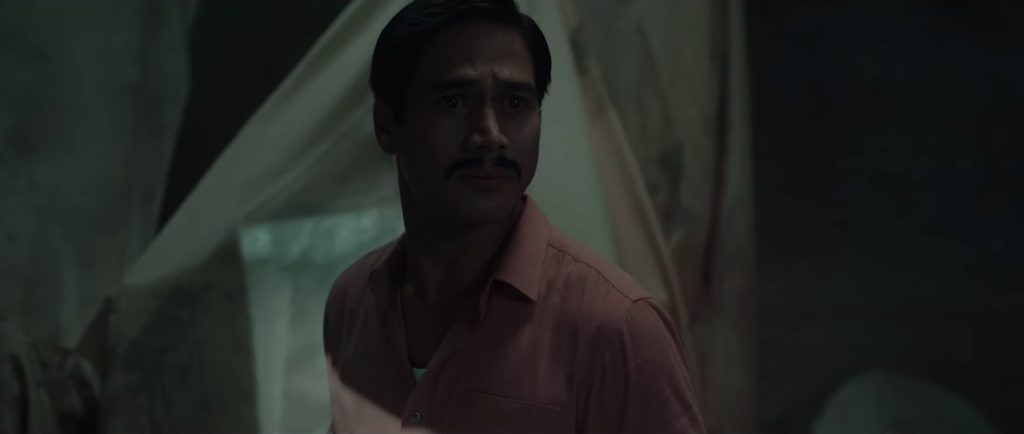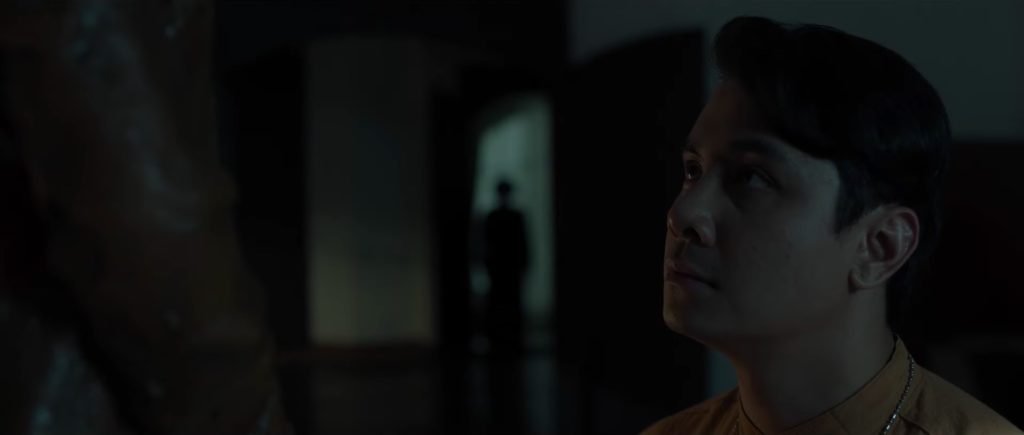With an exciting history-inspired premise and a promise of intense and complex storytelling, the film Mallari was poised to be groundbreaking. The movie is a fresh take on the Pinoy horror genre. But while it is commendable in some aspects, it fell short in more ways than one.
The movie is loosely based on the real story of Father Juan Severino Mallari, the first documented serial killer in the Philippines. He was recorded to have killed 57 people in Pampanga.

But this is not a biopic. If you watch the film with that notion in mind, you will be confused. The movie simply takes history as a premise and builds a complicated psychological horror narrative around it. Piolo Pascual plays three characters from three generations, centuries apart: the original 17th-century killer priest, and his fictional descendants from the 18th and 21st centuries. Interesting? There’s more.
If you gave Shake Rattle and Roll movies a chance, then elevate your Pinoy horror repertoire and see Mallari.
The three characters, though centuries apart, could interact with each other through a form of astral time travel while in their sleep. Intriguing?
Now, the 21st century Mallari, John, must choose between carrying on or stopping the curse that has been plaguing their ancestry. Sounds like an awesome plot? It actually is. This is the kind of movie that will get you thinking and anticipating. A departure from the tired and predictable Pinoy horror tropes, Mallari is indeed a fresh take, story-wise.
The movie also boasts of solid technical achievements. Its cinematography, special and visual effects are on point, and its musical and sound scoring, right on the note. All of these are very important in a horror/thriller because the last thing this kind of movie needs is an audience that gets bothered by cheap tricks. But Mallari is far from cheap. The production is certainly top-tier, and because of that, the spectacle becomes believable, honoring the audience’s suspension of disbelief. One important example is the scene where the three Mallaris are in one frame, seamless and chilling.
When it’s a Piolo Pascual movie, of course, expect acting chops. Hands down, this is one of Piolo’s best acting pieces, playing three characters so distinctly down to mannerisms. But the entire cast delivers too, with Janela Salvador and Elise Joson whipping up supporting chops. But the trophy must go to JC Santos. You need to see why.

Hands down, this is one of Piolo’s best acting pieces… The entire cast delivers too but the trophy must go to JC Santos.
Now, while the biggest thing that made this movie fly with colors is its unique story, the one that prevented it from fully achieving its potential is… how the story was told. It is clear that there is an attempt to create a thought-provoking, complicated masterpiece, but it ended up being utterly confusing, and even illogical at times. Too many ingredients to thicken the plot, yet the pot overflowed and the soup spilled too much. Too much unnecessary jump scares (they get predictable after a while), unnecessary scenes that fail to establish anything, editing that could have been tighter, and some script that makes you go ‘yes, we know. We see it.’ My pet peeve in a movie is when the character needs to explain in dialogue what is already obvious visually, and this movie has a generous serving of those. Because of these areas of opportunity, watching the movie was a high and low experience. There were edge-of-your-seat moments, and then there were duds. It got tiring at a certain point, before it picked up again, but ended with one of the best dolly shots in Philippine cinema.
With all these, Mallari is still one hell of a ride, and one of the more commendable Philippine horror outings in a while. As mentioned earlier, there was an attempt to create something big, and while it didn’t totally get there, it almost did, and beautifully so.
Should you watch it? OF COURSE! If you gave Shake Rattle and Roll movies a chance, then elevate your Pinoy horror repertoire and see Mallari.

RATING
Click here for more stories like this. You may also follow and subscribe to our social media accounts: Facebook, YouTube, Instagram, TikTok, Twitter, and Kumu.






















